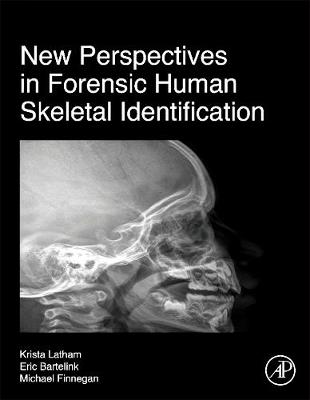(To see other currencies, click on price)
MORE ABOUT THIS BOOK
Main description:
New Perspectives in Forensic Human Skeletal Identification provides a comprehensive and up-to-date perspective on human identification methods in forensic anthropology. Divided into four distinct sections, the chapters will reflect recent advances in human skeletal identification, including statistical and morphometric methods for assessing the biological profile (sex, age, ancestry, stature), biochemical methods of identification (DNA analysis, stable isotope analysis, bomb curve analysis), and use of comparative radiography. The final section of this book highlights advances in human identification techniques that are being applied to international populations and disaster victims.
The contributing authors represent established experts in forensic anthropology and closely related fields. New Perspectives in Forensic Human Skeletal Identification will be an essential resource for researchers, practitioners, and advanced students interested in state-of-the-art methods for human identification.
Contents:
1. Introduction
Section I: Advances in Biological Profile Construction 2. Human Variability and Forensic Anthropology 3. Advances in Morphometrics for Sex and Ancestry Assessment 4. Advances in cranial macromorphoscopic trait and dental morphology analysis for ancestry estimation 5. hu(MAN)id: an R-based Application and GUI Utilizing Linear Discriminant Analysis for Classifying the Human Mandible 6. A Decade of Development in Juvenile Aging 7. Estimation of Immature Age from the Dentition 8. Adult Age-at-death Estimation in Unknown Decedents: New Perspectives on an Old Problem 9. Multivariate regression methods for the analysis of stature 10. Full Skeleton Stature Estimation 11. The History and Use of NamUs
Section II: Advances in Molecular and Microscopic Methods of Identification 12. The Utilization of Databases for the Identification of Human Remains 13. Flexibility in Testing Skeletonized Remains for DNA Analysis Can Lead to Increased Success: Suggestions and Case Studies 14. Forensic identification of human skeletal remains using isotopes: A brief history of applications from archaeological dig sites to modern crime scenes 15. Stable Isotopes Analysis: Case Applications 16. Bomb Pulse Radiocarbon Dating of Skeletal Tissues 17. Species Determination from Fragmentary Evidence 18. Bone Histology as an Integrated Tool in the Process of Skeletal Identification
Section III: Advances in Radiographic and Superimposition Methods of Identification 19. Overview of Advances in Forensic Radiological Methods of Human Identification 20. Advances in the use of frontal sinuses for human identification 21. Advances in Radiographic Superimposition 22. Comparative Medical Radiography: Practice and Validation 23. The CADI Method of Computer-Assisted Radiographic Identification 24. Morphometric Identification Methods
Section IV: International Studies and Mass Disasters 25. International Advances in Identification of Human Remains 26. Using Elliptical Fourier Analysis to Interpret Complex Morphological Features in Global Populations 27. Forensic Anthropology and the Biological Profile in South Africa: Recent Advances and Developments 28. The Influence of Operational Workflow and Mortuary Environment on Identification 29. Advances in Disaster Victim Identification 30. Summary
PRODUCT DETAILS
Publisher: Elsevier (Academic Press Inc)
Publication date: July, 2017
Pages: 500
Weight: 1400g
Availability: Available
Subcategories: Diseases and Disorders, Forensics

